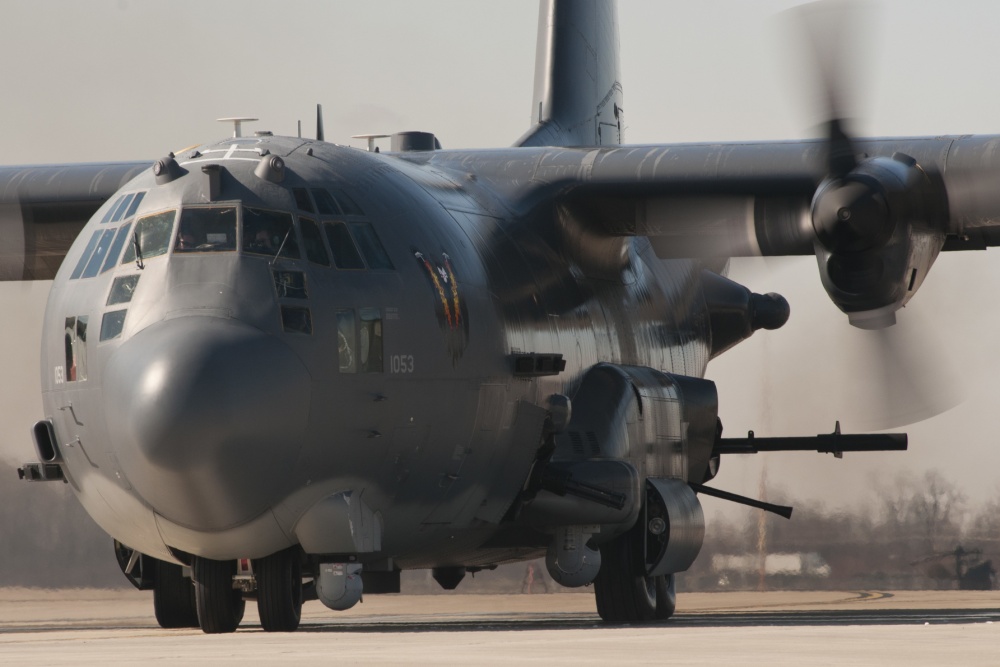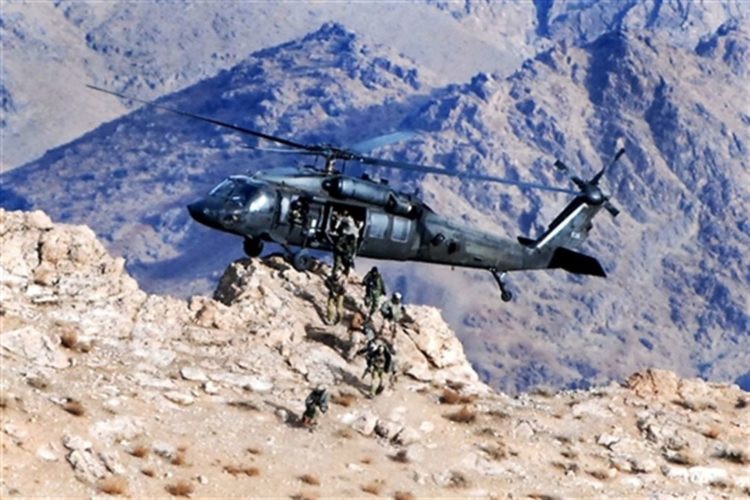Last year, a gunship crew from an Air Force Special Operations Command (AFSOC) squadron helped turned the tide in a fierce engagement against ISIS fighters in Afghanistan.
The nine-hour operation took place last April in Nangarhar Province. An AC-130U aircraft from the 4th Special Operations Squadron was proving overhead support to a Special Forces assault force that was going after an ISIS mountain redoubt.
Major Jeffrey Wright, a Special Tactics Officer with the 24th Special Operations Wing, said in an interview with DVIDs that “it would be inaccurate to describe this target as a village. Rather, this was a military installation literally dug into the side of the mountains, with a single path through which friendly forces could assault. The enemy consolidated their forces here in a warren of interconnected command and control nodes, operations centers, staging areas, and ‘on-base housing’ for ISIS-K leaders. This was no low-level commander and his men: this place was ‘ISIS-K’s Pentagon.’”

An AC-130U and its impressive arsenal.
Although the assaulters had the numerical advantage over the ISIS fighters, they had the terrain disadvantage. Alongside operations in an urban setting, mountain warfare presents one of the toughest combat environments. The enemy often, but not always, occupies the vital high ground, thereby having an added advantage to that of being the defender.
At one point, the assault stalled as wounded pilled in. At that point, a Special Warfare operator requested close air support (CAS) from an orbiting AC-130U gunship (callsign “Spooky 41”). Within seconds, effective fire began raining down on the enemy positions, which were precariously close to the American element. As Major Wright mentions in his account, the ISIS fighters thought that their close proximity to the American commandos would automatically negate any sort of air support for fear of a blue-on-blue incident (friendly fire). This tactic is as old as gunpowder and has been used to great effect by forces with firepower inferiority, for instance, the North Koreans or the North Vietnamese in the Korean and Vietnam wars respectively.
Spooky 41’s accurate fire enabled the ground force to call in a MEDEVAC to evacuate the wounded. Three times American helicopters braved the situation and hoisted the wounded. In the meantime, Spooky 41 provided such effective suppressing fire that the ISIS fighters weren’t able to hit the vulnerable helicopters. Without Spooky 41, the ISIS stronghold would have claimed many dead or wounded before it fell.
For their actions, the crewmen of Spooky 41 received two Distinguished Flying Crosses and 12 Air Medals.
An interesting point to come out from this engagement is the manner in which commanders chose to deploy the Air Commandos on the ground, that is, as a team. The size of the operation, however, would explain that. It is not usual that you will find a whole Special Forces company, that is, six
More usually, Special Warfare operators are attached individually to other Special Operations units. For example, a Pararescueman (PJ) will join a Special Forces Operational Detachment Alpha’s (ODA) and augment its medical capabilities or a Combat Controller (CCT) or Tactical Air Control Party (TACP) will join a Navy SEAL platoon to provide a Joint Terminal Attack Controller (JTAC) capability. Such individual attachments usually last for a deployment.
Already have an account? Sign In
Two ways to continue to read this article.
Subscribe
$1.99
every 4 weeks
- Unlimited access to all articles
- Support independent journalism
- Ad-free reading experience
Subscribe Now
Recurring Monthly. Cancel Anytime.
The size of the operation, however, would explain the team approach. It is not usual that you will find a whole Special Forces company, that is, six ODAs plus an Operation Detachment Bravo (ODB), exercising command and control, going out together.
Before this operation, Coalition and Afghan forces had attacked the ISIS position three times to no avail.










